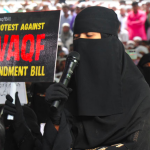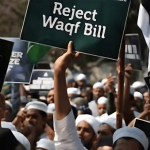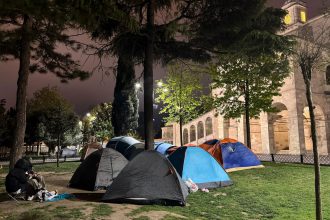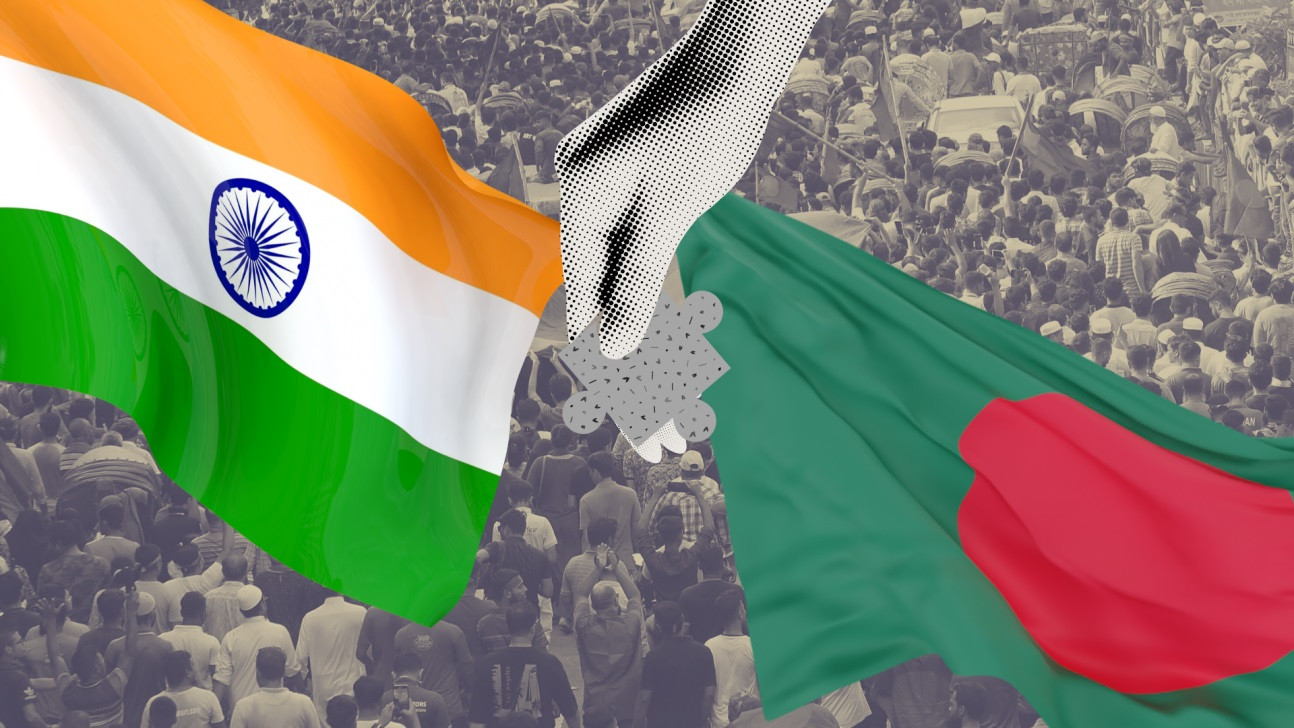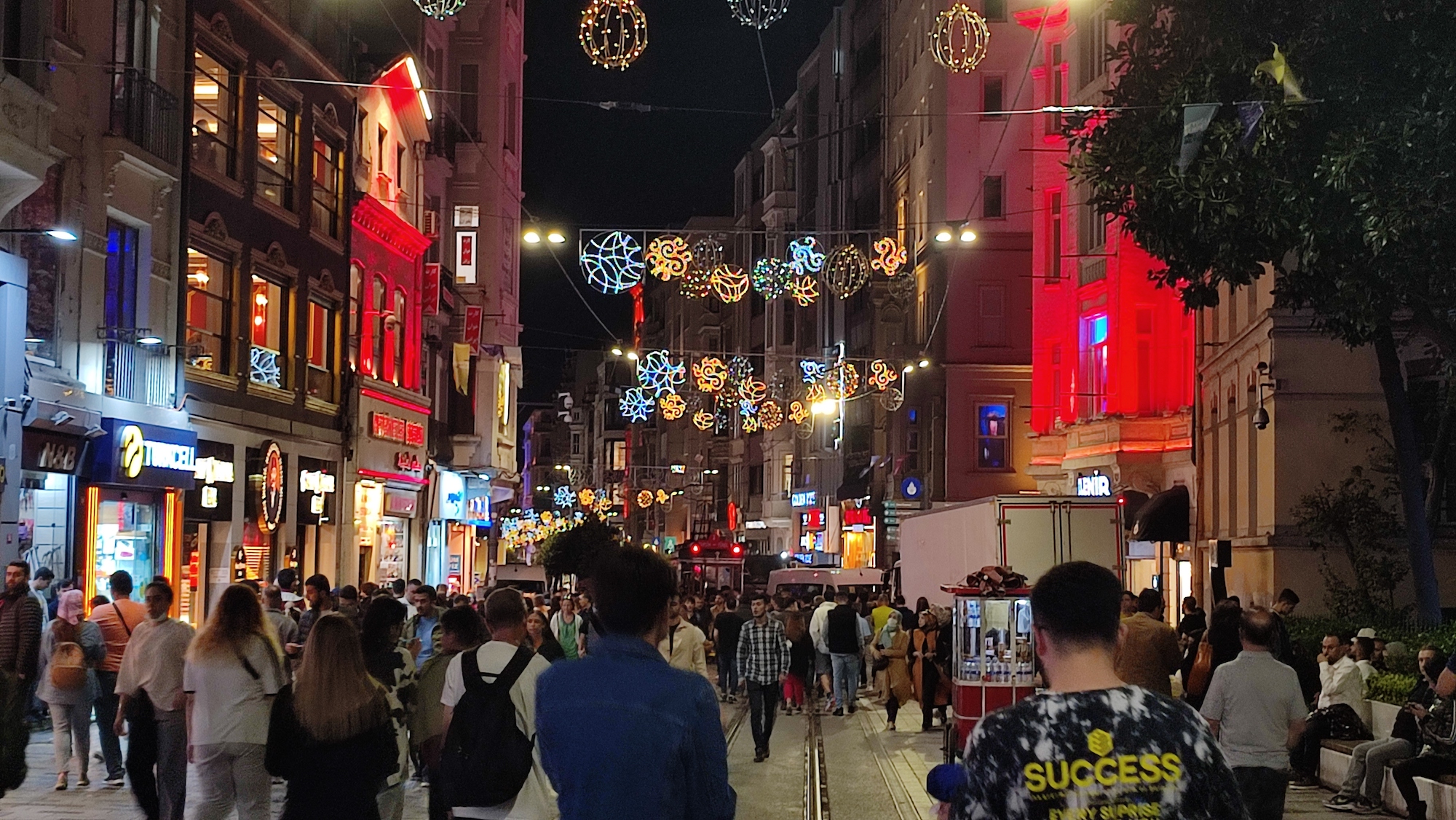By Sam Muhho
World domination is a topic that is frequently dramatized across a variety of genres. From action cartoons to epic movies, the plot of a power hungry madman or clique of madmen bent on absolute control has provided the foundation for dynamic plots that have captivated various people. No other person has masterfully spun such personalities and plots than history itself. While everybody is familiar with megalomaniacal leaders like the fascist Adolf Hitler and strongman Soviet leader Joseph Stalin, few realize the pivotal and directing role of high level western corporate-financier interests, or “globalist”, insiders acting backstage throughout some of the most grotesque portions of history.
This clique of insiders operates at the apex of world finance and politics and emanates from the Wall Street/London center of power. One crucial and undeniable tool that they have leveraged to further their influence and interests of domination was the rise of international communism and the cover of leftist ideology, which often works strangely with “neo-liberal reforms” (as will be noted regarding Thailand) to mask what was in many cases a corporate-fascist driven agenda. At its core, however, this is neither a capitalist nor a communist “conspiracy” because such ideologies by themselves are merely tools of leverage to hammer together a structure of control depending on the hands that use them.
Not All Socialists Are Created Equal: Hugo Chavez vs. Thaksin Shinawatra
While leftist ideology is cited in this essay as one of the historical tools used by high finance to centralize wealth and power into hands they can control and manipulate for their benefit, let it be known that many in leftist circles are NOT such pawns. I consider leftists, along with well-intentioned and anti-imperialist rightists, my allies in forming a broad and united political front against neo-imperialism and globalization. Regardless of what political ideology one gravitates to, it is increasingly necessary for people to realize that they are part of a bigger reality. We must realize that in order to defeat a collective enemy that uses any political tool it can when necessary, we as good people must collectively join together with knowledge of the true power-brokers and their tools regardless of political ideologies exploited by media pundits to divide us. We must also realize that not all who call themselves leftists and who mislead the masses with lofty and progressive rhetoric are truly leftist.
Leftists must realize this in order to not be deceived by Trojan horses of corporatism and imperialism, such as Barack Obama. Rightists must realize this in order to not be played off against legitimate leftists who could serve as pragmatic allies but are in many cases being institutionalized by the system to support one continuous agenda.
On the international relations scene, it is increasingly necessary to distinguish friend from foe and also the glaring hypocrisy of the establishment in demonizing a particular man who went against the system while defending a man holding similar ideological tools simply because the other man was a tool of the system; this is clearly noted in the comparison between Hugo Chavez of Venezuela and Thaksin Shinawatra of Thailand.
Hugo Chavez, an iconic leftist used progressive and liberal populist ideology to develop his country into a self-sufficient entity outside the grid of western neo-imperialism. He also opposed western geopolitical meddling and propaganda with regards to Libya, Syria, Iraq, and other incidents. Chavez arrayed the summation of his nations’ resources, both human and capital, in opposition to the plans of a western corporate-financier “new world order”. While rightists may criticize Chavez’s ideology, it cannot be denied that Chavez ignited a broad, participatory grassroots democracy in Venezuela. Investment was made into educating and empowering the marginalized masses and for the first time, lower class people were actively dialoging and familiarizing themselves with the political process and the Venezuelan constitution. As a supporter of many of the solutions Tony Cartalucci outlines about empowering the people through education, initiative, and self-sufficiency, this is something I must praise. Because Chavez is a polarizing leader ideologically, I’ll let the individual reader interpret Chavez as they will but the following geopolitical reality is undeniable and apolitical; it is something that must be realized as immutable truth regardless of one’s ideology.
Chavez, being an independent leftist, was a target of the “globalist” establishment for going against their system. While the media leverages what is broadcasts as the failings of his “radical populism and socialism” this same media is entirely disingenuous in supporting and DEFENDING the very same policies when leveraged for their interests in Thailand by Thaksin Shinawatra. Contrary to Chavez, Thaksin used similar populist techniques and socialist tools to build a political support baseand leverage him into power but then systematically attempted to integrate Thailand within western corporatist interests. Thaksin, before and DURING his term as Prime Minister from 2001 to 2006, had ties to western corporate-fascist interests including the notorious Council on Foreign Relations and the Carlyle group, working as an advisor. He was interconnected with the elite of such circles including James Baker of Baker Botts (CFR) and tried to perpetuate their economic interests in Thailand at the expense of the King’s “self-sufficiency economy” model and the people’s economic interests. Many of his corporate backers would later lobby for him after his ousting from power in 2006, the day after giving a “progress-report” in front of the globalist Council on Foreign Relations. He additionally had ties to the Bush family and a whole host of compromised and disingenuous individuals. This was manifested even when he would become a criminal fugitive from his country as Tony Cartalucci, who is based in Thailand, notes:
“Since the 2006 coup that toppled his regime, Thaksin has been represented by US corporate-financier elites via their lobbying firms including, Kenneth Adelman of the Edelman PR firm (Freedom House, International Crisis Group, PNAC), James Baker of Baker Botts (CFR), Robert Blackwill ofBarbour Griffith & Rogers (CFR), Kobre & Kim, and currently Robert Amsterdam of Amsterdam & Peroff (Chatham House).”
“To say that Thaksin Shinawatra and his “red shirts” have foreign backing would be a profound understatement.”
“Thaksin’s proxy political party maintains the “red shirt” mobs which in turn are supported by several NGOs including the National Endowment for Democracy funded “Prachatai,” an “independent media organization” that coordinates the “red shirt” propaganda efforts. Prachatai was recently nominated for the Deutsche Welle Blog Awards by the “Neo-Con” infestedFreedom House, upon which former Thaksin lobbyist Kenneth Adelman sits as a member on the board of directors.”
Thaksin would subsequently and in exile lead a political front in Thailand called the “Red Shirts” or the “United from for Democracy Against Dictatorship” (UDD) who publically operated as a leftist movement. The “Red Siam Manifesto” detailed the ideological talking points of their movement written by Giles Ungpakorn, a self-confessed “Marxist” among the rank-and-file red shirt intelligentsia. Maoist and outright communist elements were pervasive in the movement as point out multiple times by Tony Cartalucci and this served as an ideological backbone to mobilize Thailand’s marginalized peasant masses in an exploitative and unsustainable manner which, unlike Chavez, would serve western interests to the detriment of the country but hypocritical western blessings. The threat this movement poses to Thailand’s sovereign political and economic networks and the “red shirts’” overall position in the geopolitical reordering of Asia by the west against China is noted in “Warning Signs Over Old Siam.”
What made Thaksin so bad, other than his murderous “war on drugs” that saw over 2,500 people extra-judicially killed, most that had nothing to do with the drug trade, or his autocratic tendencies to limit opposition? Chief of his crimes was the attempt to institute a US-Thailand Free-Trade Agreement (FTA) in cooperation with the US-ASEAN Business Council and with the full support of its corporate-fascist overlords, specifically, “3M, war profiteering Bechtel, Boeing, Cargill, Citigroup, General Electric, IBM, the notorious Monsanto…banking houses Goldman Sachs and JP Morgan, Lockheed Martin, Raytheon, Chevron, Exxon, BP, Glaxo Smith Kline, Merck, Northrop Grumman, Monsanto’s GMO doppelganger Syngenta, as well as Phillip Morris.” These same interests, through the US-ASEAN Business Council, would host the leaders of the Red Shirts in April of 2011 during a Washington D.C. visit at a time in which Thaksin was attempting to mobilize his people back into power with his sister as a proxy. In “CONFIRMED: Thailand’s “Pro-Democracy” Movement Working for US”, the real power brokers behind this western front are thoroughly exposed.
The implications that the FTA agreement would have had on Thailand’s sovereignty, both politically and economically, would have been catastrophic as noted by Professor Aziz Choudry, PhD who points out various criticisms of the FTA agreement including its secretive planning and attempt to bypass Thailand’s parliament. The FTA, if it had succeeded, would have usurped Thailand’s food sovereignty, opening its markets to plunder and monopolization by the likes of Monsanto and Syngenta, both who are upon the US-ASEAN Business Council. It would also have disrupted Thailand’s medical sovereignty to “big-pharma interests” who would have opposed the Thai government’s subsidizes on drugs and the production of highly effective generic drugs as opposed to the monopolistic production by western pharmaceutical corporations driven to control markets and not cure people. As Dr. Choudry notes in one example:
“[Thailand produces] cheap reliable generic drugs including one of the cheapest anti-retroviral drugs in the world, GPO-VIR, which the government hopes will reach 70,000 people this year who otherwise would not afford treatment. Under the FTA, Thais can wave goodbye to hopes of accessible treatment.”
Thaksin and his tools actually have the audacity to consider themselves a “people’s power” movement while in reality they are another angle of western corporatism and neo-imperialism and later an attempt of fomenting a “color revolution” in Thailand not unlike the western-engineered Arab Spring. This is but a minor part of the sovereignty erosion and usurpation that Thaksin’s plans would have wrought. Thais pride themselves in being the only nation in Southeast Asia to avoid physical occupation and colonization by western powers and are very defensive about maintaining their economic and political sovereignty which the US-Thailand FTA was openly seeking to destroy not through free, voluntary exchange but through a deliberate evisceration of their economic self-sufficiency.
Political Shadows and Illusions
It is rather ironic that many “free trade” agreements end up supporting not genuine free trade through voluntary exchange but an unbalanced trade arrangement done to the benefit of western corporations and not a mutual benefit to collaborative, individual enterprises. It is for this reason that many libertarians, even Ron Paul, have spoken out against free-trade agreements like NAFTA. The purpose of free-trade is to keep nations interdependent, bolstering corporate interests and profits at the expense of national sovereignty, self-sufficiency, and the empowering of the masses through the means of technology and education.
The follies of populism are noted in the threat they pose to Thailand’s infrastructure and sustainability. Rather than investing in much-needed mass transportation and failing educational institutions, Thaksin’s sister and current proxy PM Yingluk Shinawatra has invested efforts into a ” first-time car buyer tax rebate scheme” encouraging MORE cars and had by November of 2012 subsidized 300,000 new vehicles, adding to Thailand’s already abysmally congested and polluted streets. The money invested into this venture could have been more than sufficient in expanding Thailand’s mass-transportation but instead, the “30 million Thai baht” in revenue lost in the subsidizing will go not into a financial “blackhole” but into the gleeful hands of the car manufactures behind Shinawatra’s foreign support base. Other members of the US-ASEAN Business Council like Exxon, BP, Ford and GM are undoubtedly pleased with this modified form of wealth redistribution from Thailand’s state coffers and into the Fortune-500, money LOST and not invested by Thais and for pragmatic Thai enterprise and solutions to everyday problems, like mass-transit for traffic. Handouts are more convenient for Shinawatra’s political machine.
The administration is even subsidizing free tablet computers for first grades where they would probably be misused, stolen, and rendered pointless as Tony Cartalucci points out instead of investing in Information Technology and engineering to empower the society to be innovative and self-sufficient electronically. Thailand’s “rice buy-back program” has become a colossal failure along with the rest of “Thaksinomics” and ultimately the people are losing out because of their ruling establishment using populism to both build a support base and then transfer state revenue into unsustainable, non-pragmatic, temporary fixings. Yet amidst the failure, somehow, the SAME pundits who point the finger at Chavez’s failures on mainstream media ended up PRAISING Thailand’s populist failure such as Stanley Weiss. The difference? Chavez worked AGAINST Wall Street and London’s “new world order”; Thaksin worked FOR it.
Keep this glaring hypocrisy and the role of ideologies as tools of a false left/right division when moving forward in analysis of the global elite’s agenda. Also, keep in mind the fact that as a tool for social and wealth control, “Bankers Love Socialism” as Dr. Anthony Sutton’s brilliant books and lecture on the topic demonstrates; let it be known again that not all who have used socialism as leaders are assets of the imperialists and many have used it in resilient opposition to it. From Dr. Carroll Quigley’s detailed and professional assessment of the “globalist” reality in the book “Tragedy and Hope” to the condensed “None Dare Call it Conspiracy” (free PDF here) by Gary Allen, let it be known that there is a dominant corporate elite, operating from high finance and often using leftism, among other tools, as a means of control. They do this to create “captive markets” within their orbit and, as Dr. Sutton explains, and prevent rival and independent “free-enterprise economies”, similar to Thailand’s current entrepreneurial market which western interests are attempting to undermine with a Free-Trade Agreement perpetuated by a “leftist” cover.
While Gary Allen’s book may overestimate the role of communism, which is not surprising considering that it was published during the 1970s under a different political environment, he nevertheless offers many insightful and undeniable facts on cases where communism was definitely used by western financiers. In context to Quigley’s more detailed and professional book, a transparent reality emerges for the researcher. It is this transparent reality that must be noted as the prequel to modern-day neo-imperialism. Gary Allen’s book will be cited below with page numbers noted in parenthesis according the page numbers found in the PDF linked to above; the information may vary from page numbers in published copies of the book.
The Bankers and the “Reds”
What must be understood most significantly regarding the rise of the 20th century world communist movement are the preceding historical realities and who the dominant financial forces were. When people think of Communism, they immediately equate it with the likes of Karl Marx and Frederick Engels who wrote the Communist Manifesto and Soviet leaders like Vladimir Lenin and Joseph Stalin. While those were the actors on stage, the real masters of communism were the average communist proletariat’s supposed mortal enemies, the echelons of high finance including the Rockefeller, JP Morgan, and the Kuhn, Leob and Co. financial circles who were the driving forces behind Bolshevik financing (Allen 17, 55). Communism’s rise is best understood by noting its financiers’ corresponding actions in the west as well as a basic understanding of international finance and banking.
International banking thrives on the financing of governments in the same manner in which local banks finance individuals. Governments tend to spend more money than they procure through taxes, requiring them to borrow from international, cosmopolitan bankers. These bankers are, by their nature, close to the government and along with their orbits of financial interests, they exploit governments in order to centralize for themselves power and guarantee themselves a monopoly, the opposite of free-market capitalism. The bankers take out collateral on their loans by ensuring the government dictates policies according to their own interests and also, as history has demonstrated, maintaining connections with respective governments’ enemies in order to keep a balance of power in their favor (29).
Preeminent in this was the expansive Rothschild banking dynasty that began in Frankfurt, Germany, founded by Mayer Amschel Rothschild who lived from 1743 to 1812. The dynasty and its successive generations became incredibly wealthy by financing different European governments to fight against each other, sponsoring both sides of conflicts that would usually end in a balance of power around the House of Rothschild in France, England, or Austria. The Rothschilds would balance power in a manner in which they could manipulate political events through their financing in the case war broke out (30). They solidified their international grasp by interlocking with other banking fronts. JP Morgan is documented by many, including the former head of the House Banking Committee, Congressman Louis McFadden, as the chief American agent for the Rothschilds (33).
As a prelude to the rise of Communism, its western financiers had engineered a virtual coup in the United States through their creation of the Federal Reserve banking system. This was created under the pretext of preventing economic panics, especially after the artificial Panic of 1907 that was admittedly induced by JP Morgan’s rumors about the “insolvency of the Knickerbocker Banker and the Trust Company of America” (33). The Panic would be leveraged by individuals like Nelson Aldrich, Morgan’s “mouth” on the Senate floor, to introduce measures for a Senate bill to establish a central bank.
However, the corporate interests propagating this would be revealed and the bill killed only to have the bill reintroduced under a leftist, progressive cover. It has been documented by people such as Dr. Gabriel Kolko in The Triumph of Conservatism that the banking and related corporate interests had infiltrated the leftist parties in America and Europe because the ideologies could be used to centralize power in the government and the government then controlled to the interest of the bankers. The rightist circles were already seen as being overtly tied to the corporate fronts but the leftist facade would ultimately make way for the establishment of the Federal Reserve in 1913 under Woodrow Wilson which was legitimized as helping to prevent economic crashes but in reality, setting the stage for crashes to be “scientifically created” (34-38, 41).
The Federal Reserve would manipulate the money supply and interest rates to direct the economy as it willed. Congressman Wright Patman, former chairman of the House Banking Committee, would describe it as an uncontrolled, uncoordinated “second government” (39). It would provide the greatest benefit to corporate-fiancier insiders aware of its intentions and directions who could then make millions off the markets through their foresighted investments. The majority of the U.S.’s debt is owned by private institutions connected with the Federal Reserve and their networks of international bankers in the U.S.; the nature of the Federal Reserve’s financiers was to promote debt and the national debt increased under Woodrow Wilson by 800 percent after the creation of the Federal Reserve and its elastic money supply (46). The Great Depression and a plethora of other recessions would be deliberately engineered by the Federal Reserve to cut off competition to the Wall Street/London central bankers’ interests and bring in desired legislation in the wake of the crash. Montagu Norman of the Bank of England would have a hand in engineering the Great Depression by meeting with Secretary of the Treasury Andrew Mellon in February 1929, right before the Federal Reserve would reverse its easy-money policy of the 1920s and manipulate the economy into a crash. Montagu Norman made no secret of his desire that the “that the Hegemony of World Finance should reign supreme over everyone, everywhere, as one whole super-national control mechanism”(41-44).
In order to pay off the government’s debt and the corresponding interest to the Federal Reserve, the same financial networks, including Nelson Aldrich, would push in the Senate for a progressive income tax, marketed to the masses as a class tax (44). In reality, those who supported such a tax tended to be from the upper echelons of society including the Rockefeller and Carnegie foundations which have been found to have direct ties of funding to the world socialist movement and communism by the Congressional Reece Committee. Morgan interests would also be heavily involved through men like Aldrich. The income tax would serve as a means to both pay interest into the hands of the corporatist elite, a wealth distribution from the middle class into the hands of the “1%” similar to how populism in Thailand under Shinawatra established a distribution of wealth into the hands of corporate-financier interests. It would also cut off competition to international mega-financiers, by circumventing the free market system, making it difficult for competitors to amass capital, and therefore establishing a virtual monopoly of corporate hegemony (46-48).
In addition to the Morgan interests, the Rockefellers, Kuhn, Loeb, Co., and their international banking connections with the Warburg banking family from Germany and the Rothschilds also promoted the progressive income tax (49). The Warburgs were among the conspirators of the Federal Reserve with Paul and Felix Warburg establishing their presence in the U.S. while Max Warburg would play a role in Germany, especially with the financing of the Bolsheviks, along with American Jacob Schiff, also in the Warburg and the Kuhn, Loeb, and Co. orbit. The elites pushing the progressive income tax would build “escape hatches” for their wealth by directing their money into offshore accounts and tax-free foundations like the Rockefeller Foundation, responsible for connections to communism as a political tool of control (48). It should be no surprise that two of the ten planks for communizing a society include a central bank and a progressive income tax. Communism is a pseudo-economic system made to cater for the hegemonic designs and wealth of the bankers and crony finance capitalism, distinct from voluntary exchange capitalism and national capitalism that put the interests of a nation’s enterprisers and economic development first and not cosmopolitan corporate elite.
The same interests who helped set a prelude to their world domination by hijacking the U.S. economy and setting the stage for communism as a tool would begin their actions in Russia during the midst of World War I (WWI) which was itself an illegitimate conflict. WWI was divided along banking interests; open admissions were made after the war of immense propaganda and demonization of Germany to justify U.S. intervention on behalf of Morgan investments in England. Woodrow Wilson was controlled by his “alter ego” Colonel Edward Mandel House who wrote a book called Phillip Dru: Administrator talking about establishing a world socialist government as envisioned by Marx, that is, global banking-corporate hegemony under a leftist, progressive cover (63). House was instrumental in both the creation of the Federal Reserve and U.S. involvement in WWI. WWI was meant to serve as a gateway to a global government, which was foiled by the U.S. Senate’s unwillingness to join the League of Nations. However, the stage was set up for the Bolsheviks would rise from the midst and the later engineered World War II environment would lead to the United Nations, itself controlled by the same interests (49-50).
During the WWI, Lenin was in Switzerland while Trotsky was in New York (Sutton “Wall Street and the Bolshevik Revolution”). The Czar Nicholas II had abdicated in March 1917; Prince Lvov then tried to establish a government patterned after the U.S. only to give way to the Kerensky regime that would grant amnesty to exiled communists, paving the way for the November 1917 Bolshevik Revolution. Max Warburg in Germany would finance Lenin to overtake the government in Russia including Lenin’s trip across Europe to Petrograd, Russia with the tune of up to $6,000,000 while Lord Alfred Milner, a British Rothschild agent, would contribute $5,000,000. Jacob Schiff, one of the Federal Reserve founders connected with Kuhn, Loeb, and Co. would also contribute aid under the cover of “Jewish war relief” which was later found to be a business investment of $10 million (Allen 53-56). Woodrow Wilson would issue the passport for Trotsky, under the influence of “Colonel” House, and oversaw his safe passage into Europe after being detained by Canada (Sutton “Wall Street and the Bolshevik Revolution”). Bolshevik Communism was not imposed by the will of the oppressed masses but was rather a trickle-down oppression instituted by these western financiers.
It is true that in the technicalities of the Communist revolutionary movement, there would be factionalism and a split across various interests, especially among the foot-soldiers of the revolution. One prime example of this is that throughout the multi-faceted history of the Soviet Union, inter-party rivalries existed such as that which was witnessed after the post-Stalin era. During this era, there were stories of conspiracies against the party leadership coupled with a “clash of issues and personalities” (McClosky 162-163). Even in the midst of the Bolshevik Revolution and during the post-revolutionary 1920s, dissent among different ideological groups was present. One example was the 1920s conflict between the Bolsheviks and the more moderate Mensheviks which disputed with regards to the philosophy of the nature and timing of revolution, theories about party organization, morality, and tactics (48-54). Nevertheless, the pinnacle of the “revolutionary” communist movements always intersected with western mega-financial circles that were providing the leverage for such movements in order to bolster their own power; communism was merely a glove that they wore to do so. This is not too different from the fact that even though factionalism and division exists in the “post-Arab Spring” Middle East, it is still western corporate-financiers pulling the strings.
Even more critically important is the transfer of business and technology to the Soviets by the same interests. The pre-Soviet Czarist economy is often portrayed as backwards but in reality, they had a highly extensive manufacturing capability and even produced an airplane bigger in wingspan than a Boeing 747 (Sutton “Wall Street and the Bolshevik Revolution”). The Soviets would build no independent plants and infrastructure of their own. According to the authoritative Dr. Anthony Sutton, every manufacturing plant in the Soviet Union was built by Rockefeller, Ford, and Morgan-allied interests (Sutton “The Best Enemies Money Can Buy”). Even in the midst of the Bolshevik Revolution, Chase Manhattan Bank, a merger of the Rockefellers’ Chase Bank and the Warburgs’ Manhattan Bank, would finance a Red Cross mission to Russia to aid the Soviets. It was directed by William Bois Thomson of Chase Manhattan Bank and of the Federal Reserve System (Sutton “Wall Street and the Bolshevik Revolution”). Lenin and later Stalin’s Five Year Plans would be financed through these outlets as well including Rockefeller and Kuhn, Loeb, and Co. connections (Allen 80).
Rockefeller’s Standard Oil Company of New Jersey would build a refinery in Soviet Russia and establish a $75,009,000 deal with the Bolsheviks in 1927 (79). Chase Manhattan Bank would be instrumental in founding the American-Russian Chamber of Commerce to serve western banking interests in 1922. It was also involved in selling the Bolsheviks American bonds as revealed by Congressman Louis McFadden. Negotiations between Chase and Russian banks would go beyond the financing of raw materials and would even deal with machinery and U.S. cotton exports along with an entire mapped out program including plethora of “non-strategic items” that would further Soviet manufacturing and weapons capability (80-84).
The transfer of technology and money to the Soviets would be pursued in almost identical means throughout presidential administrations from Franklin D. Roosevelt to Richard Nixon which is not surprising as they were all in the hands of the Federal Reserve interests and later the Council on Foreign Relations (CFR). The CFR was established by the same figureheads and for the purpose of global hegemony; it served as a “school for statesmen” (67). Dr. Carroll Quigley, an insider on this and a personal mentor to Bill Clinton, admits to this as being an agenda of domination in finance and politics by mega-corporate interests and audaciously approves of this plan as being good for humanity. He even wrote a 1,300 page book, “Tragedy and Hope”, detailing the technicalities of this plan (10-12). The Council on Foreign Relations still survives to this day along with other corporate-financier think-tanks like the Brookings Institute, the International Crisis Group, and Chatham House,perpetuating western corporate-financier hegemony.
According to Dr. Anthony Sutton, critical to Soviet military capability was the transfer of western technology to the Soviets. The Ford Motor Company played a role in this, financing the Goki Plant in Russia, which produced much of the Soviet war technology including armored vehicles used in Vietnam against Americans demonstrating again that “war is a racket” (Sutton “The Best Enemies Money Can Buy”). These western banking and corporate interests would also arrange for the transfer of western technology to the Soviet Union and even overseeing the Soviet capability to direct their missiles. These same interests, including Max Warburg, would also pour money into Hitler’s war machine.
The Modern-Day Reality
The global elite’s ambition was (and still is by different but similar means) global conquest, an international order built to their liking. They use conflicts and international manipulation such as the rise of Communism and Nazism as geopolitical leverages to advance themselves economically and politically on the world stage, compounding their wealth and co-opting national governments with the ultimate intention of a global government that would preferably be “corporate-fascist” under the façade and techniques of socialism (Sutton “The Best Enemies Money Can Buy”). They are continually active today, though with different political “gloves” that arose after the fall of communism but through the same command centers like the Council on Foreign Relations. Their mission is to target potential rivalries and replace them with proxies, using whatever political tool available to divide and control.
This “globalist” system is now is a mechanism that propagates itself in a more disingenuous manner where human rights are leveraged, nationalist governments are targeted and overthrown, and animperial administrative network, funded by the global oligarchy, is instituted to manage targeted regions’ affairs. This is run through groups like the National Endowment for Democracy and George Soros’ Open Society Institute which have been active in the so-called “Arab Spring” in a geopolitical gambit similar to the rise of Communism in the fact that corporate interests dominate and shape the playing field for their hegemony. We must realize the continuity of the interests behind the rise of communism in history and their present, continuous agenda to divide opposition and control our futures.
It is through this that we must recognize the controlled nature of both political parties and how each side is propped up only in accordance with designs of global hegemony. After all, Woodrow Wilson’s handler, Colonel House, admitted this in his book, Phillip Dru: Administrator. He approvingly spoke of a global socialist (i.e. corporate-fascist in socialist “clothing”) government, which is not surprising considering him being a mouthpiece of Wall Street and London. Under the establishment of the Council on Foreign Relations, the political foot-soldiers for this “conspiracy”, a word Colonel House himself used to describe this agenda, from across political parties would be gathered together under an umbrella where in essence, there would be no difference at the apex of the political parties with who is coordinating world affairs (Allen 37-38). This was seen clearly in the 1960s where Richard Nixon, supposedly a “conservative”, was leveraged into office by the “liberal” Nelson Rockefeller and did more to institute liberal techniques of government control to control wealth according to the “1%” structure over the economy than the previous “liberal” (i.e. authoritarian) Democratic administrations he had denounced. This ultimately would funnel control to the New York Wall Street oligarchs in the Rockefeller, Morgan, and Rothschild circles. Henry Kissinger and many of Nixon’s advisors were direct Council on Foreign Relations members with a certified record of using leftist ideology to control the economy on behalf of banking interests (85-89).
The Real Revolution
The volatile century of the 1900s has much to teach humanity in the drama of human tragedy and deceitful megalomaniacs. While Communism and Nazism take center stage, the greatest evil was that coordinating them from behind the scenes, the corporate and international banking interests. From the prelude to and direct financing of the Bolshevik Revolution, to the transfer of western technology to the Soviet Union and the controlled nature of both political parties, we see a singular agenda marching forward. We need a real revolution. On this, Tony Cartalucci offers us:
“They need us, we don’t need them. That’s the big secret. We get our freedom back as soon as we take back our responsibilities for food, water, security, the monetary system, power, and manufacturing; that is independence. Independence is freedom, freedom is independence. We’ll never be free as long as we depend on the Fortune 500 for our survival.”
“Fixing these problems unfolding overseas starts with fixing the problems in our own backyards. Boycott the globalists, cut off their support, undermine their system, and they lose their ability to commit these atrocities. That will be a real revolution and it can start today. Not burning cities and masked rebels waving flags, but communities no longer dependent and fueling a corrupt system we all know must come to an end.”
Sam Muhho is a student of history and an advocate of anti-imperialism and anti-globalism. He can be reached at smuhho1@gmail.com and runs the Facebook page “Globalist Watch” atfacebook.com/gwatch1776 in order to explain the reality at play in global affairs. (Courtesy: globalresearch.ca)




